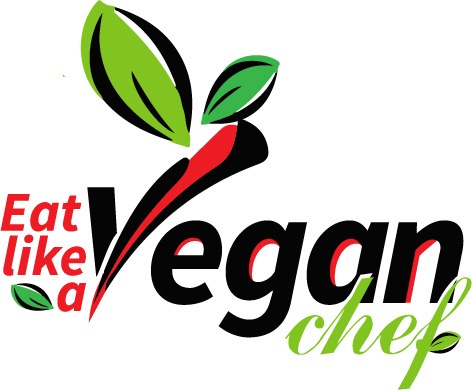
Belgian endive (Cichorium intybus var. foliosum) is a slightly bitter, crisp leafy vegetable that belongs to the chicory family. It is known for its elegant, torpedo-shaped, pale-yellow leaves that grow tightly packed together. Originally cultivated in Belgium in the 19th century, this vegetable has become a culinary staple in European cuisine.
Common Varieties:
- White Belgian Endive – The most popular type, grown in darkness to maintain its pale color.
- Red Belgian Endive – A hybrid variety with red-tinged leaves, often called radicchio di Treviso.
- Curly Endive (Frisée) – Loosely related but features a more frilly texture.
Seasonality & Availability
Belgian endive is primarily a winter vegetable, with peak season from late fall to early spring. It is commonly grown in Belgium, France, and parts of the United States. Due to modern cultivation techniques, it is available year-round in specialty grocery stores and farmers’ markets. Fresh Belgian endive has a crisper texture in cooler months when its bitterness is more pronounced.
How to Choose the Best & Freshest
When selecting Belgian endive, look for:
- Firm, tightly packed leaves – Avoid ones with loose or wilting leaves.
- Smooth, pale-yellow leaves – Greenish tips indicate prolonged light exposure, making them more bitter.
- No brown spots or blemishes – Signs of age or improper storage.
- Compact shape – A well-formed endive should feel dense in your hand.
Storage & Shelf Life
- Refrigeration: Store in the crisper drawer in a perforated bag for up to one week.
- Avoid Light: Exposure to light causes bitterness.
- Do Not Wash Before Storage: Moisture can accelerate spoilage.
- Freezing: Not recommended, as it becomes limp and loses texture.
- Pickling or Fermenting: Can be done but is uncommon.
Nutritional Benefits & Health Properties
Belgian endive is a nutrient-dense vegetable, offering multiple health benefits:
- Low in Calories: About 17 calories per 100 grams.
- High in Fiber: Supports digestion and gut health.
- Rich in Vitamin K: Supports bone health and blood clotting.
- Source of Folate: Essential for cell function and pregnancy.
- Antioxidant Properties: Contains kaempferol, a flavonoid known for anti-inflammatory benefits.
Culinary Uses & Cooking Methods
Belgian endive is versatile and can be enjoyed both raw and cooked.
Best Cooking Methods:
- Raw: Ideal for salads and appetizers.
- Grilled: Enhances sweetness and reduces bitterness.
- Sautéed: Pairs well with olive oil, garlic, and lemon.
- Baked or Braised: A classic French preparation with butter or plant-based alternatives.
- Stuffed: Works well with nuts, plant-based cheeses, or grains.
Pairing Suggestions
Best Complementary Flavors:
- Herbs & Spices: Thyme, nutmeg, black pepper, chives.
- Fruits: Apples, pears, citrus.
- Nuts & Seeds: Walnuts, pecans, sunflower seeds.
- Dairy Alternatives: Cashew cream, almond ricotta.
- Grains: Quinoa, wild rice.
Recipe Ideas & Inspirations
1. Belgian Endive & Citrus Salad
- Thinly slice Belgian endive.
- Toss with orange segments, pomegranate seeds, and a lemon-tahini dressing.
- Top with walnuts and fresh mint.
2. Grilled Belgian Endive with Balsamic Glaze
- Cut endives in half, brush with olive oil, and grill until caramelized.
- Drizzle with balsamic reduction and sprinkle with crushed hazelnuts.
3. Stuffed Belgian Endive Boats
- Fill endive leaves with a mixture of hummus, diced cucumber, and cherry tomatoes.
- Garnish with fresh basil and hemp seeds.
Substitutions & Alternatives
If Belgian endive is unavailable, consider these alternatives:
- Radicchio: Slightly more bitter but has a similar texture.
- Escarole: Milder and works well raw or cooked.
- Little Gem Lettuce: For a crisp, less bitter option.
- Napa Cabbage: If using it in cooked dishes.
Fun Facts & Trivia
- Belgian endive was accidentally discovered by a Belgian farmer in the 1830s.
- It is traditionally grown in darkness to prevent chlorophyll production.
- In Belgium and France, it is often called witloof or chicon.
- Belgian endive is a key ingredient in gratin d’endives, a French dish with creamy béchamel sauce.
Sustainability & Environmental Impact
- Water Usage: Requires moderate irrigation.
- Organic vs. Conventional: Organic options are available but pricier.
- Low Food Waste: Outer leaves can be used in soups or composted.
- Minimal Pesticides: Endive is relatively resistant to pests.
Common Challenges & Solutions
- Bitterness: Roasting or pairing with sweet ingredients helps balance flavors.
- Wilting: Store properly in a dark, cool space.
- Tough Outer Leaves: Peel them off and use the tender core.
- Browning Edges: Prevent oxidation by brushing with lemon juice.
Special Considerations
- Allergies: Rare, but those sensitive to chicory root may react.
- Bitter Taste Sensitivity: Some people perceive bitterness more strongly.
- Digestive Health: High fiber may cause bloating in some individuals.
- Oxalate Content: Low, making it safe for kidney stone-prone individuals.
Final Thoughts
Belgian endive is an elegant, nutritious, and versatile vegetable that deserves a place in your kitchen. Whether raw in salads or cooked into rich, flavorful dishes, it offers a unique balance of crunch, bitterness, and mild sweetness. Give it a try and experiment with different preparations to find your favorite way to enjoy this underrated gem!
